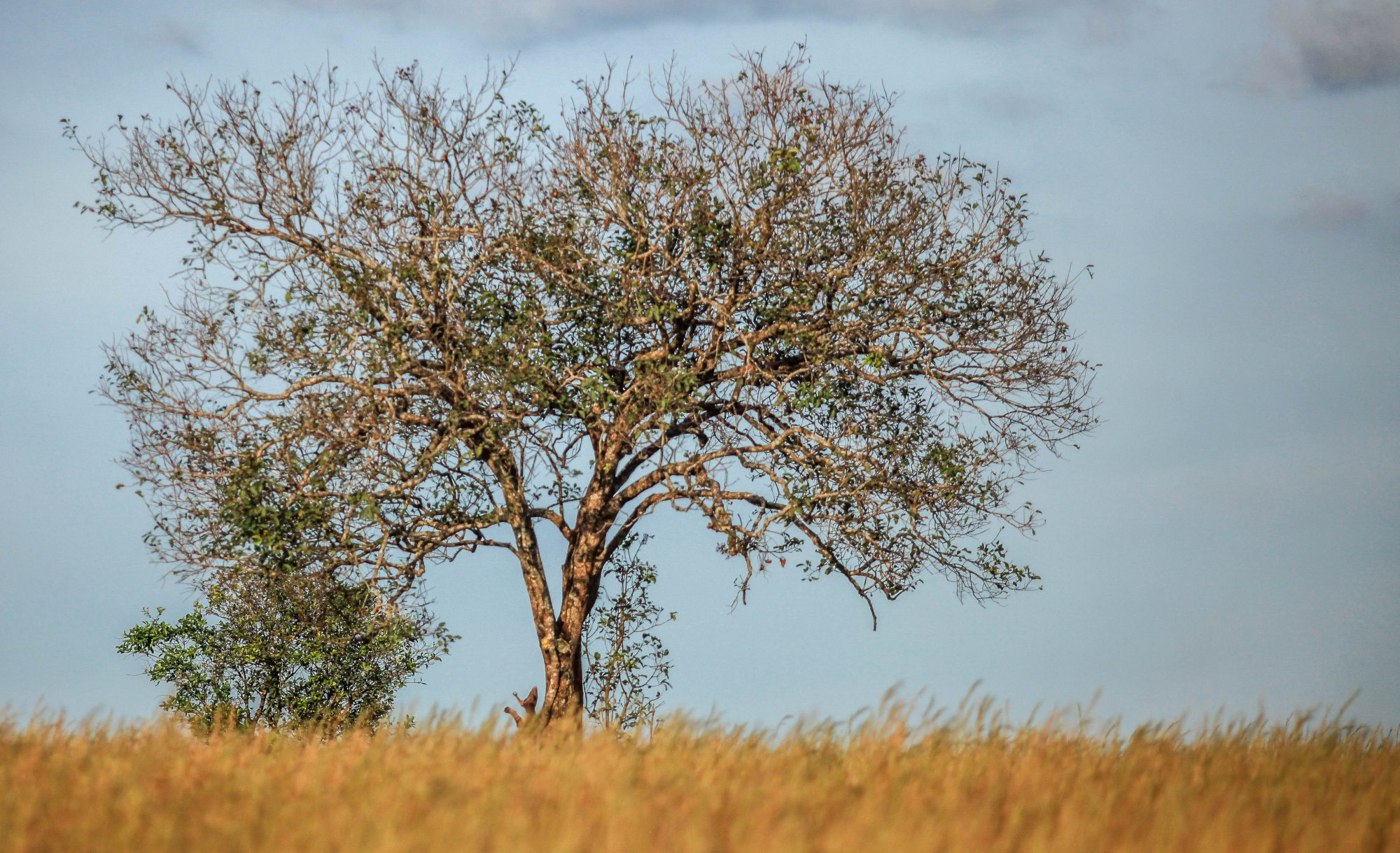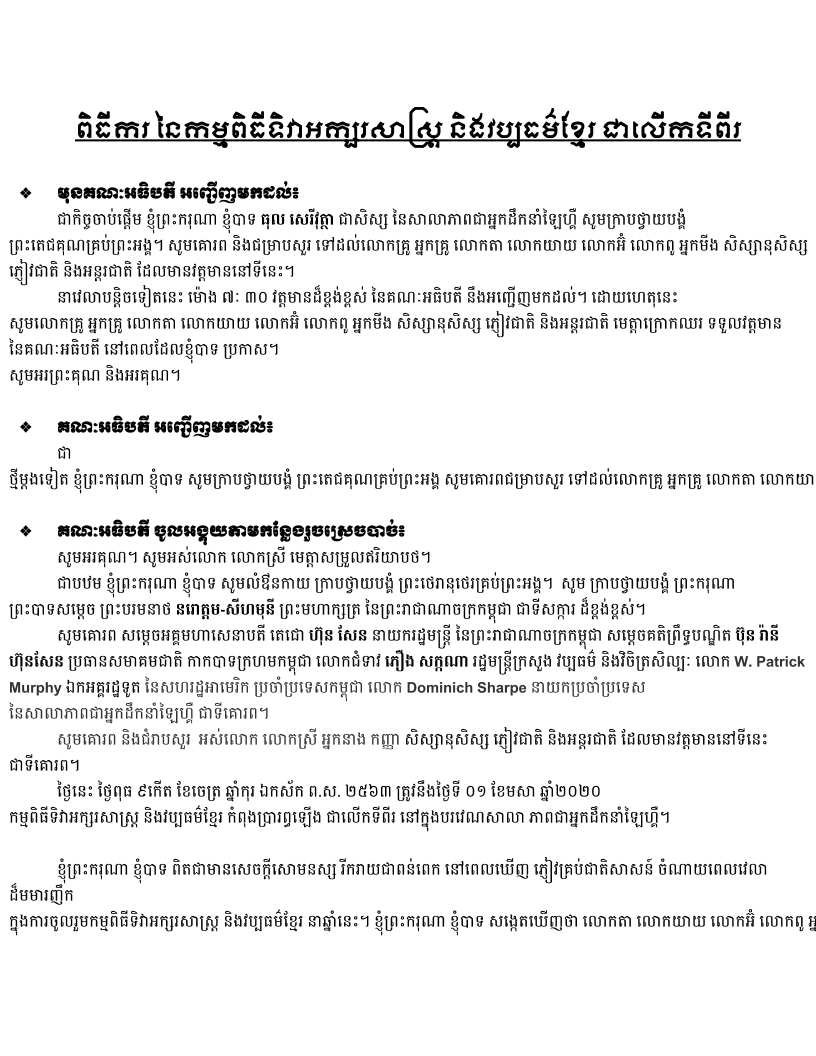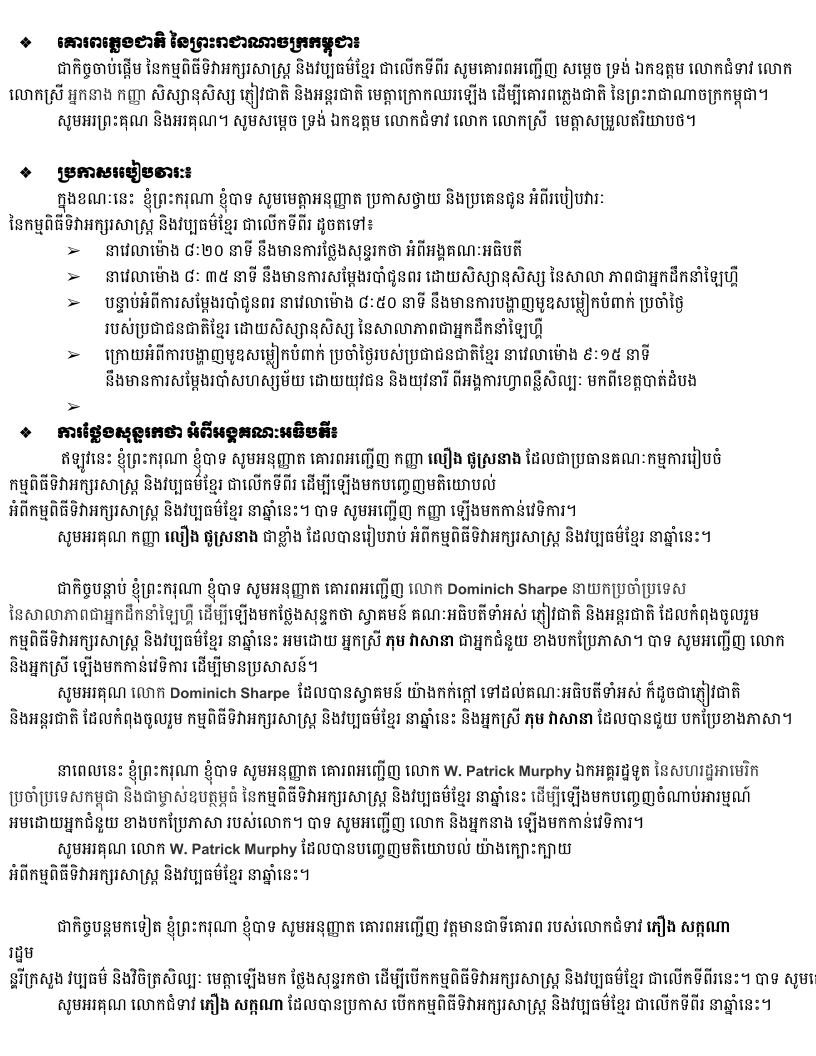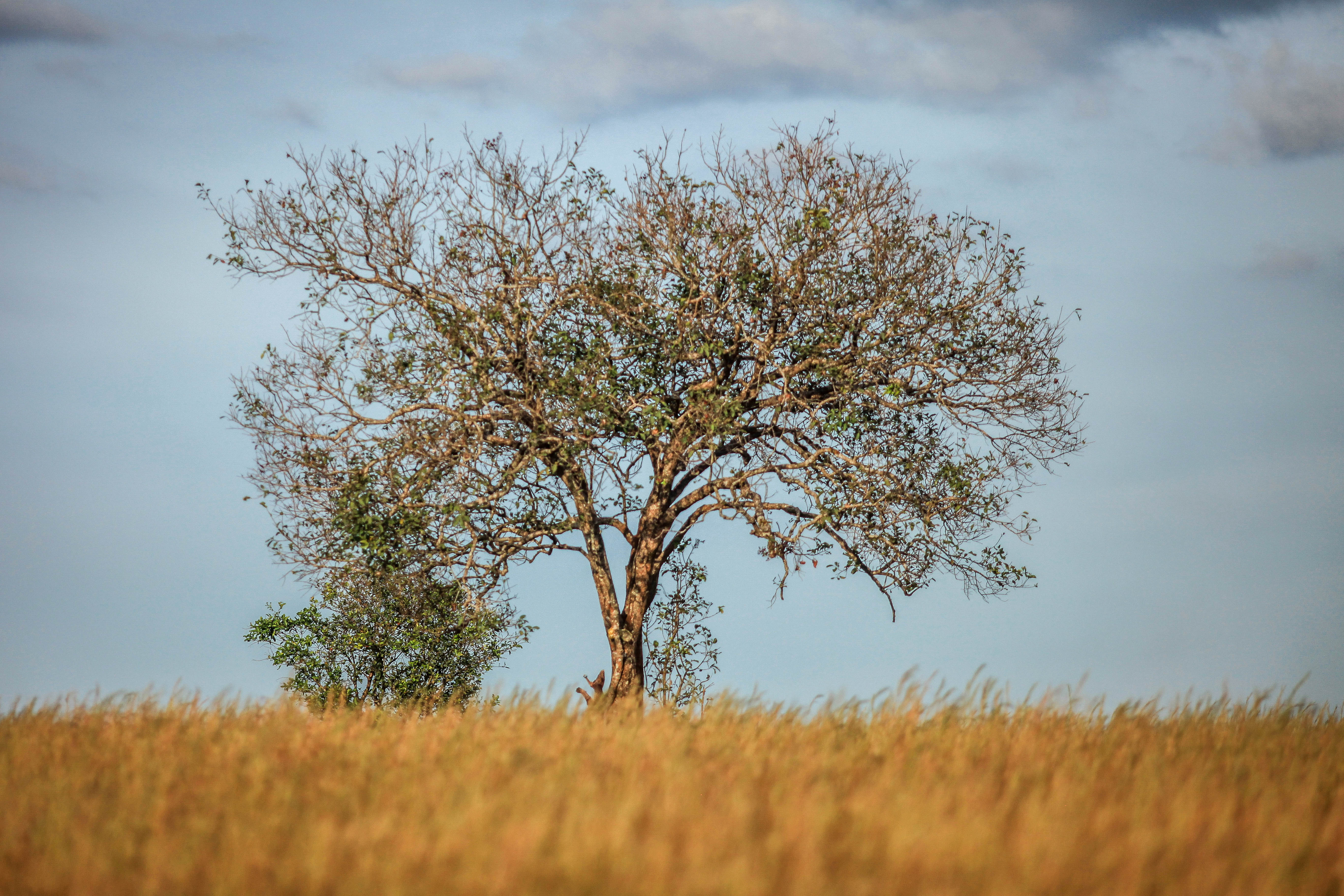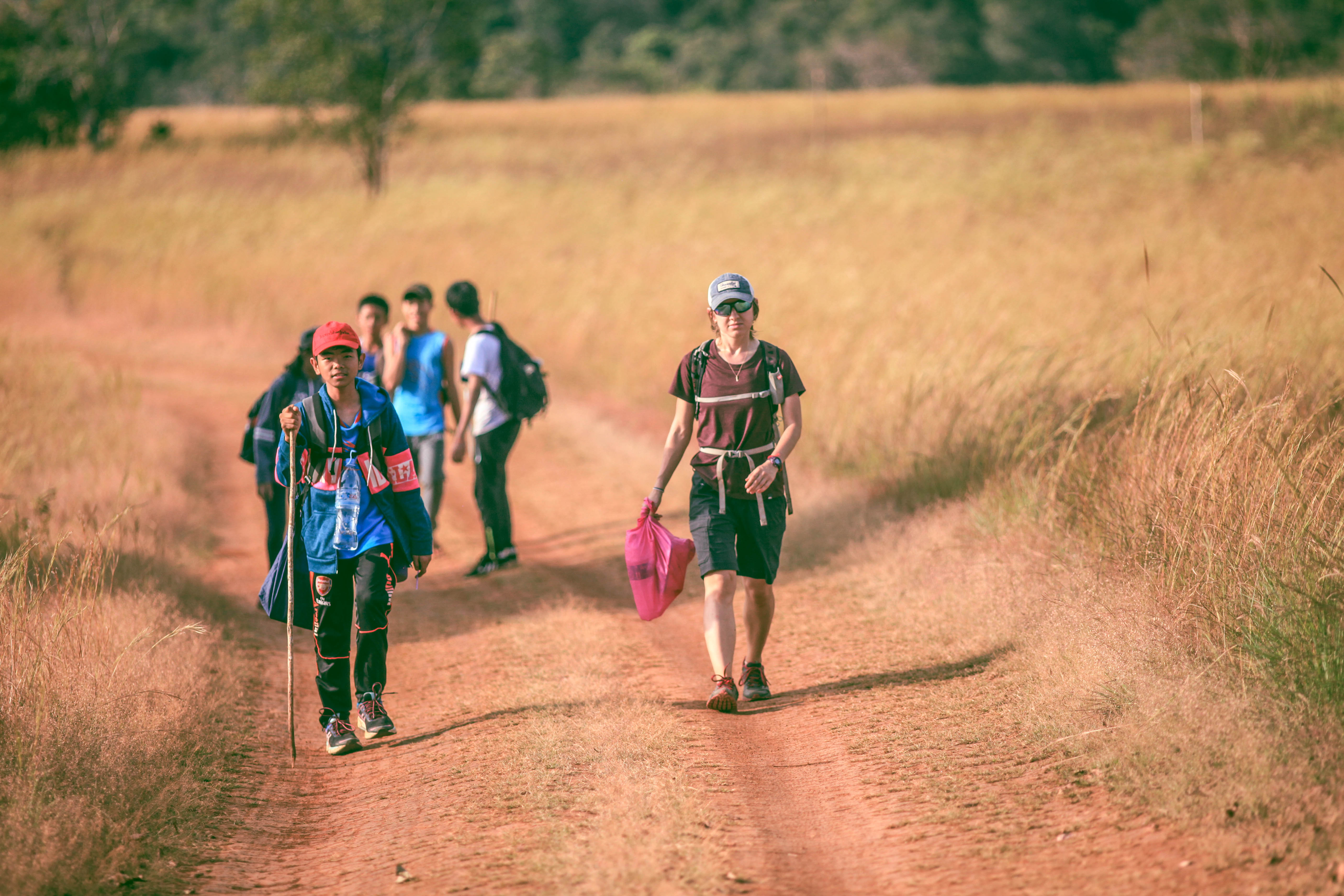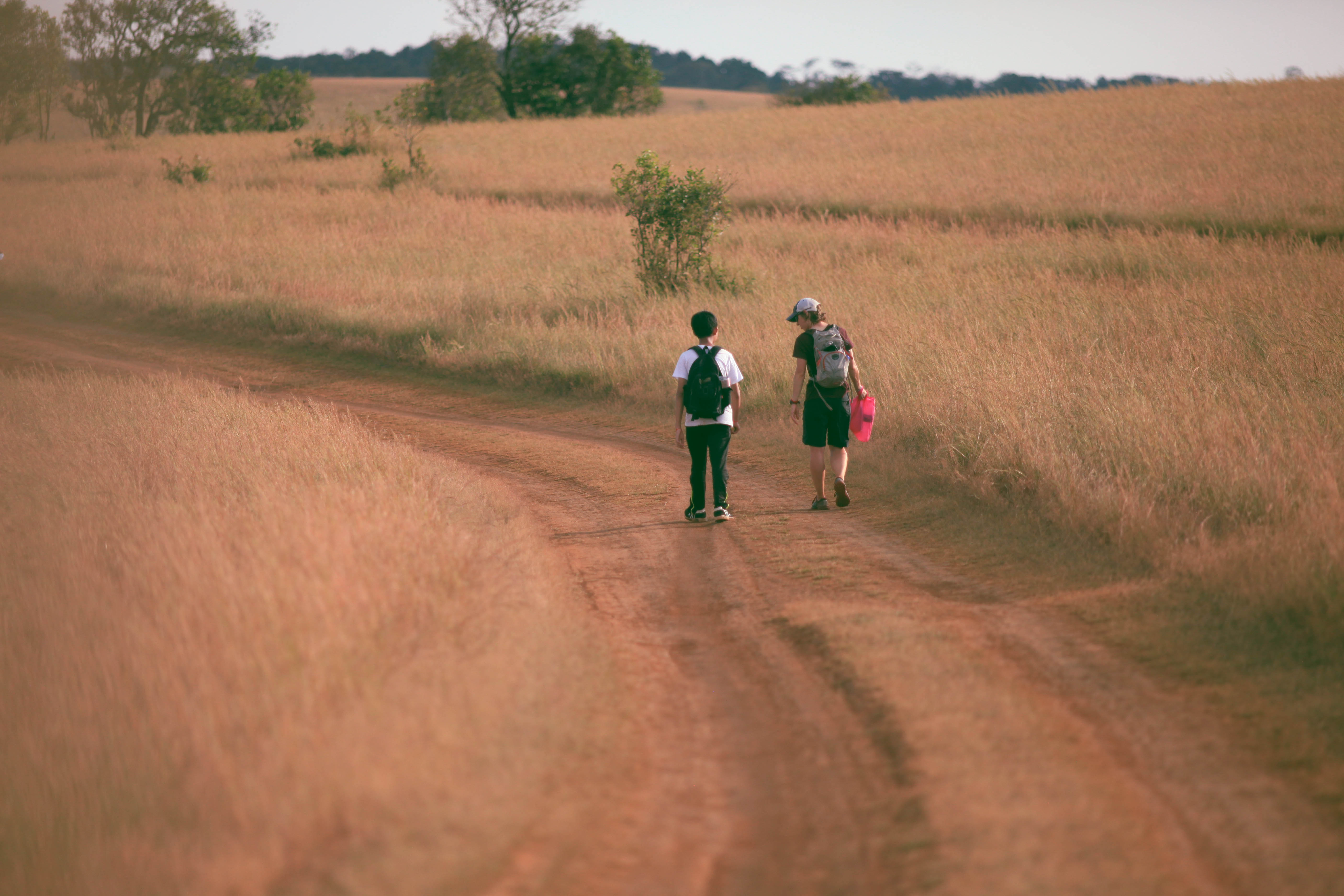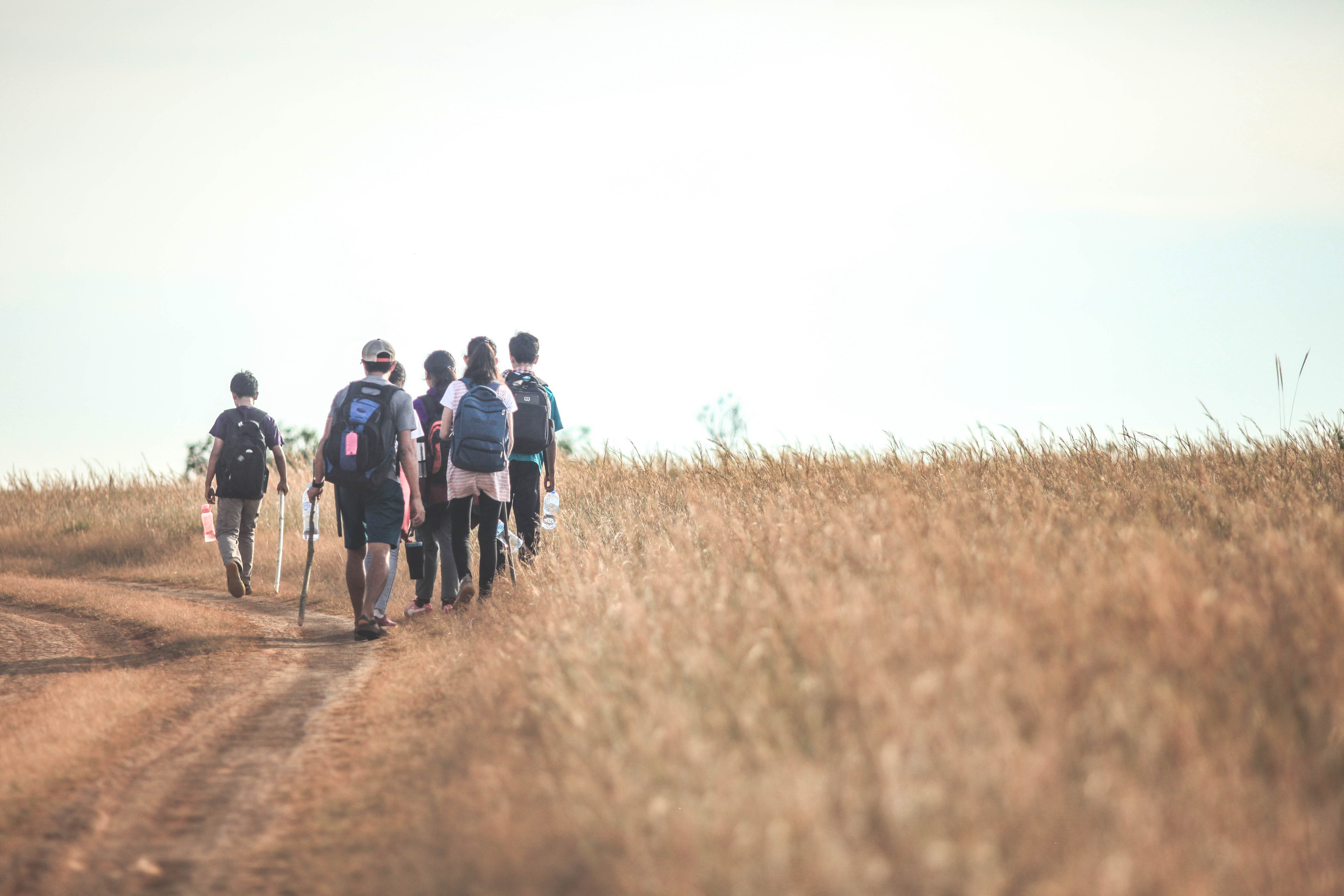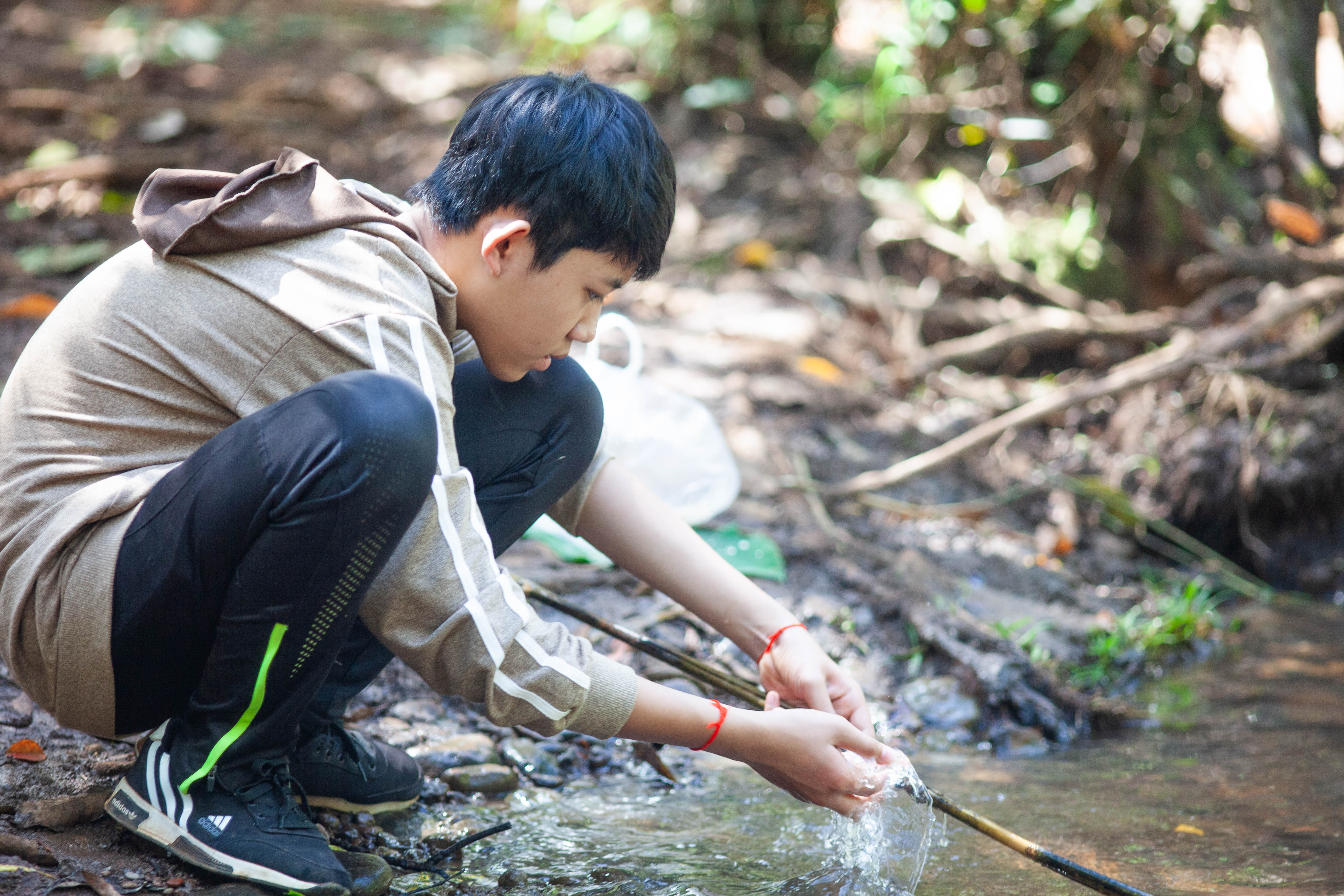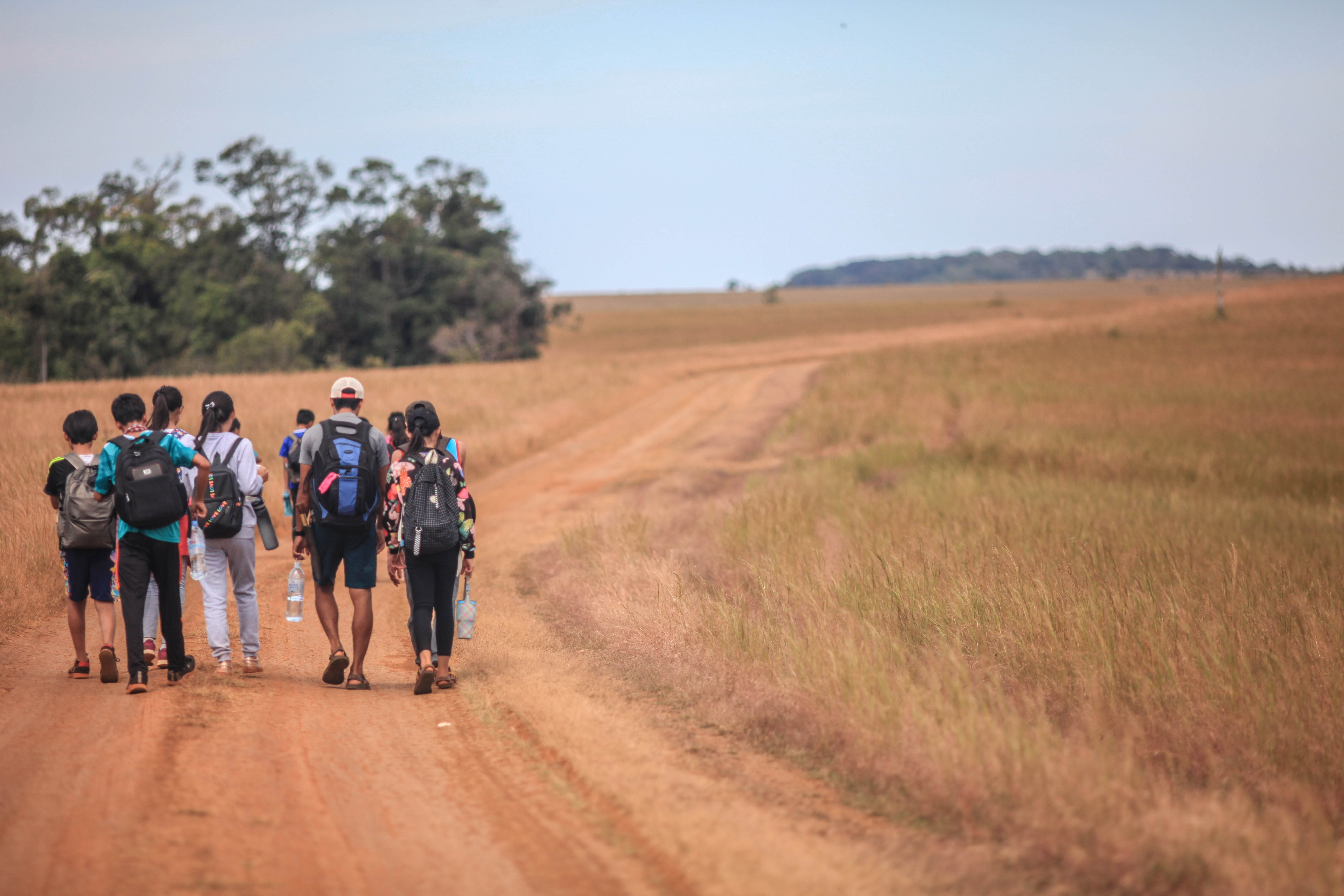One of the Khmer Essential lessons was to learn how to be a master ceremony. These are the final result of the learning. For better reading experience, please click on one of the images below to read as PDF.
Exploration Round 1, 2, 3 (2019-2020): Cambodian Youths Outdoor Leadership
How I Change Cambodia |2018-2019| (Not Done)
CHANGE is a verb which uses to describe anything that is in the action of developing into a newer age, and it happens essentially everywhere in this sophisticated world. No one knows about the outcomes of Change, only if they were planned them and wished for a great ambition.
Change can be complex as a wild goose chase or as simple as flickering a finger. In this distinguish world, there are many complicated and malfeasance changes that make us as a human cannot understand. However, there are also many seductive changes that we believe make this world a superb place.
My life here at Liger is a miracle as the most surprising and priceless gift ever handed. Every day, there is always a lesson that I can learn to become an even better learner, no matter where I am; during an academic trip or at school. (I call myself a leaner rather than a student because a leaner, they learn everything that they want from everyone at anywhere. Meanwhile, a student they study in class and only from the teacher.) My third year at Liger is the time that I see myself even clearer as a practical game-changer in helping Cambodia. Let name a few!
Throughout the year, every project that I was involved in has the same intention to make different changes to Cambodia in any particular part. No Single-Use-Plastic at Liger is my first seven weeks project of the year that took action to reduce the amount of single-use plastic such as plastic straws, plastic bags, plastic cups, snack bags, plastic spoons that come to Liger every day. The project managed to reduce 75% of the total amount of single-use plastic usage at Liger in the first three months after the campaign was launched. It was a small and tough project to work on, but it created the most environmentally friendly impact on my school.
ILO is the first Senior project that I have been involved in, in a role as a language translator of the own-learning soft skill module. ILO is an acronym of the International Labour Organization; an organization parts of the UN that bring together government, employees, and workers to build up decent work and jobs to all people around the world, has partnered Liger to become one of their soft skill module provider to Cambodia students. On the behalf of the ILO, a group of Liger students has put themself in tasks to translate the contents from English to Khmer as the ILO advised, make the translation sound like Cambodia as close as possible and suitable for them. My team provides all of those translated soft skill modules to Cambodia students to learn, to take action, as well as becomes a better employee. The result for all the modules that have given out to the students, when implemented, is hard to say that they will use those lessons for their future. However, throughout the feedbacks form that was provided after each module, we can say what we have done made most of the students satisfied and willing to use those in one of their paths.
How I Change Cambodia |2017-2018|
Change is a natural development in the universe. Change is how something develops or upgrades from one to others anywhere, anytime, any second. There are two main changes, natural changes and non-natural changes. The two main changes are causing by two main factors, and they are living things and non-living things. Most of the changes are caused by livings things such as humans, animals, and plants. Now a day, Human is acting a really important role of change from voice to action, from city to country. Did you about King Jayaraman the 7th who made Khmer the great country, King Chan Reachea who protected Khmer from the enemies and King Norodom Sihanouk who developed Cambodia after French colonization? They are the heroes of Cambodia. They have made Cambodia a great country in its golden age and it was by change. You will think that change just comes from the countries’ leaders, but change is also coming from yourself and it is starting from you. I also have made a change to myself and others.
The first change that I think I made it to myself, and it is in FLL Robotic. FLL robotic means “FIRST LEGO LEAGUE robotic”. It was about making a robot from legos, learning the mission that they give each year, and present it to them in other countries. Liger Leadership Academy which is my school chose to take this opportunity as an exploration to share this amazing experience for ten students, and I was one of them. This year 2018, the mission was Hydro-Dynamic. It was about finding a problem with water that we faced in our community, create the solutions, and present it to them in Singapore. This changed both my perspective and my thought. The robot did not change me much, but the learning mission that FLL gave us to research; HYDRODYNAMIC stick into my mind. Our exploration’s facilitator teacher Chanda who is an expert with water divided us into a group of five and he had two topics; Arsenic and Bacterial in Cambodia. My team which was NERD 2, chose Arsenic because it was an interesting topic and a little challenge to find the solution.
Arsenic is a deadliest, heavy, harmful, metal mineral that originated in the Himalayas volcano. When it erupted, the lava brought the arsenic and flow into the Mekong River. That’s why the country that is the border with the Mekong river has a problem with arsenic. Arsenic won’t kill you instantly, but it kills us like corrosion eat metal. When people drink more and more arsenic water every day, three or four years later they will get skin disorders all over their body, and that can cause a huge wound. Also, arsenic is a heavy metal so, it usually comes out of the tip of the toes, fingers, and hair first. The scariest thing about arsenic is untreatable. People can not use any medicine to treat, and that is a very heartbroken thing.
One day, while my team doing the research, we found a video that was about a fourteen years old Cambodian boy whose life was depending on the water that contains arsenic. Every morning, he and his family have to bring water far away in his village’s well. It was a hard thing, but for a bucket of water, he must do it for his family. This is a very depressing thing. Imagine you have no safe water for drinking, and lack of water force you to drink harmful water. It is so sad that I think I will never waste any water that I used again.
Jr. Essential English Literacy Round 1 (2019 – 2020)
“Why, For What” is a poem from my English Literacy round 1 (2019 – 2020). Base on the theme of “Refugees,” we studied a lot about: who is a refugee, why are they refugees, where do they come from, what are the reasons, etc. We have chosen a poem book called “Inside Out & Back Again” by Thanaha Lia to study deeper about a real-life refugee from Vietnam during the communist invasion time. This is the product of the class. Please click on the bold-tilted-text below to enjoy!
Why, For What?
Exploration Round 2 (2018-2019): Outdoor Leadrship
I would like to tell you about more about Outdoor Leadership exploration, and what we learned as a short weekly reflection with many different photos and a video. Have a nice look!
Weekly Reflection of OLE
Week 1, Oct 15th – Oct 19th, 2018
For the 1st week of OLE, we learned and understand about nature and what does it mean to each of us. Everyone’s in our class, each has a different opinion about nature. Some said nature is a producer, protector, creator. Some said nature is a destroyer, a teacher. Even though we all have a different definition, but we understand nature is natural. We also get outside of the classroom to search, observe and find what does nature looks like in a different place. From under a log to in water to around the trees. We found a lot of animals, flowers and many types of plants. We did some debate about Is Liger campus a wilderness? We spent an hour and a half on debating and questing each team. At last, we understand that all of the words such as natural, wilderness and nature were dependent on our definitions. If we think that nature is bad, its bad. If we think it is good, it is good. On the last day of our 1st week OLE, we did some Trust Fall and Trees and ropes scenario. We faced some challenges when we do the Trees and Ropes scenario that made us had, but we all talked, we all helped, we all safe and succeed.
Week 2, Oct 22nd- Oct 26th, 2018
For the second week, it was wonderful, fun and challenging week. It was the week that we had to prepare for our trip on Thursday and Wednesday to Kirirom National park. We learned how to pitch the tent and how to take it down. We prepared our stuff, discussed what we need and what we don’t need and about the trip. The morning of Thursday arrived. We were prepared and ready to do some trekking and hiking. We spent 3 hours until we arrived at the park. We did a three hours trekking in Teuk Chhou waterfall. We listened and ate our lunch there. While we were eating the sound and the feel of the waterfall made us felt relax and enjoy. Unexpectedly, we saw 5 gibbons were swinging around their habitat and finding food. It was very fun to see them and it was one of my 1st seen seeing real wild animals. We came back and find our camping place close to Srah Srang lake. This made the trip one of the most memorable moment. We helped each other to pitch the tent, cook the food, build a campfire place. We were hungry, we sang, we dance and saw a big moon shined a bright moonlight and it made the place very wonderful. We slept very well and it was rain in the dawn till morning. It was cold and moist in our tent. However, we were all happy with what we were doing. We laughed a lot and we arrived at Liger at 1 pm.
Week 3, Oct 29th- Nov 2nd, 2018
The third week of OLE was learning about risk management, how to make a safe route and learned to face any risk that might occur during trekking in a forest. A risk is a situation that might lead to danger or hazard. In our learning session, there are four ways that we can manage the risk and make sure that it is safe to take it. The four risk management are identified risk; knowing what is the risk, assess risk; knowing how dangerous is the risk, control risk; knowing what to do with the risk (should I take it or not?) and review controls; knowing what you do is safe and right. After the session, we made our own imagination risk trekking route on Liger campus. The paper told what is the risk, where is the risk, and what to do to avoid the risk. Later, we exchanged the risk paper with other groups, do a 10 minutes trekking around Liger by following their instructions. It was fun but also vague. It was hard to imagine that Liger was a dangerous place. However, we did it and everyone was happy. We spent the last to days to think about what will some risks that might happen for the future trip to Mondulkiri. What will be the solution to control the risk and how to avoid the risks.
Week 4, Nov 5th- Nov 9th, 2018
For the fourth week, the first day was simple but excited. We made the trip prep for Mondulkiri trip. We planned to go from Tuesday the 13th till Friday the 16th. We also planned to meet a South African park ranger who came and have a project with Wildlife conservation in Mondulkiri. We emailed him and was very pleased to work with us. However, there was a problem and we couldn’t work with him, but it was great to know from him. On Tuesday Keriean arrived back to Liger. She has been sick for a while. Start from that day we learned about some first aid skill. After we finished the lesson she gave us many different scenarios and three different characters: lead rescuer, assistant, and victim.
Week 5, Nov 12th- Nov 16th, 2018
The most exciting week of OLE has arrived. We spent the first day of the week to prepare any last minutes preps for the trip to Mondulkiri. Tuesday morning came and everybody was ready to feel their five senses with every form of nature in the wilderness. We left at 7 o’clock morning and it took us 7 hours to arrived on RDI red land. We spent some time on the bus to think about what are some goals that we want to see happen during the trip. After four days and three nights, here is the result.
“We had a fun and wonderful experience on the trip to Mondulkiri. We got to walk in the wood, step on the tall, green grass, scouted for the new beautiful and colorful wildlife, heard and saw the endless-long-icy waterfall surrounded by the most delightful green nature, and cooked the most delicious food for ourselves. We were given scenarios to help and save our friends when they were in need, took unimaginable risks while trekking, built a safe emergency shelter that happened to be strong and cozy, built the dramatic dancing fire to keep life warm, sat on a soft wet wood and rested to find the meaning of each form of nature, and met the old but not ill mama elephant. This experience was all about being a leader and figuring out how to help yourself and others in collaboration with nature.”
Jr. Essential Multimeadia Round 4: How to Use a (Python List)
Disclaimer: This is base on what I understand during the Class and it’ not covered all that I have learned. Just meant to give a short quick tip.
“Can someone help me put this apple, banana, pineapple, mango, longans, and grapes in this basket for me please?” It is an easy and simple task to do in the physical world but how does someone put that fruit list into a python language, let it reads and use it for their action? Well, you are have come to the right spot!
Definition:
First of all, list in python is a code that just contains any data types: strings, integers in a pair of square bracket [….] and stored them in a variable as a database. It is in order; not messy and we able to change what should be inside the list.
Code Form:
The code form of a list looks like this:
1. refrigerator = [“apple”, “banana”, “pineapple”, “mango”, “longans”, “grapes”]
Just like that!
All of the fruits are the data types, the basket is the parentheses and the list is stored in the refrigerator which is the variable.
How to use the list:
Let’s think! It turns out that the uses of it are just the same as using any type of variable in python. You can print it out like this:
1. refrigerator = [“apple”, “banana”, “pineapple”, “mango”, “longans”, “grapes”]
2. print(refrigerator)
Computer: ('apple', 'banana', 'pineapple', 'mango', 'longans', 'grapes')
Like that!
How to add an item in a list:
Do also want to add more items into your list and use it later. You just have to add a new line of code like this:
refrigerator.append ….
1. refrigerator = [“apple”, “banana”, “pineapple”, “mango”, “longans”, “grapes”] 2. refrigerator.append “durian” 3. print(refrigerator) Computer: ['apple', 'banana', 'pineapple', 'mango', 'longans', 'grapes', 'durian']
Remember: This type of code can only add one item at a time! If you have a lot of items that you want to add you might need to use another type of code.
How to take out an item in a list:
How about one time that you want to remove an item from your list when you don’t need it. Again, you just have to add a new line of code like this:
refrigerator.remove ….
1. refrigerator = [“apple”, “banana”, “pineapple”, “mango”, “longans”, “grapes”] 2. refrigerator.remove(“durian”) 3. print(refrigerator) Computer: ['apple', 'banana', 'pineapple', 'mango', 'longans', 'grapes']
Remember: This code also has the same rule as the adding item into a list!
Jr. Essential STEM Round 3 (2018-2019)
Black Snake (Lab Report)
The black snake experiment on Thursday the 7th, when like this. When we mixed 20g of sugar and 5g of baking soda together we got a solution of 2 food ingredients. We had a bowl cover with an aluminum foil of sand and we poured alcohol until it was wet and soak. We made a 2 thumbs size hole through the sand but not through the bowl and the aluminum. We poured all of the solutions to the hole, and we lighted the sand with some matches. We saw that the alcohol was burning with a blue and orange flame dancing around while the solution burning, turning to a mad black the outside, the inside colored a dark bronze and smelling burned because of the sugar. The texture looked rough with a fair hardness, but it felt very light like a piece of cotton, very soft like cotton and fragile like cotton candy. Overall it was fun to see the outcome.
The Rocky Candy

When we put the simplest food ingredients with the simplest liquid on Earth, we have an extremely delicious sweet rock candy. Boil the water at the temperature of 100 degree Celsius then pour table sugar into the boiling water. Stir it until it becomes thick and sticky close like ATM glue. The taste of it should be close to honey but not too sweet. Pour out the sweet water and put it into a clean glass. Put a stick with sugar table on it into the glass. Make sure the stick is straight and secure by using whatever that help the stick stand straight. 4 days to 7 days under the room temperature or less, you get your extremely delicious sweet rock candy. It happens like that because when the table sugar bonding dissolves with water bonding, it mixed up together and become a sweet liquid. The bonding in the liquid is just floating all around nothing to hold on. When we put the stick inside the sweet liquid, the bonding stick to the stick, become a hard crystal and the extremely delicious sweet rock candy.
Jr. Essential Multimeadia Round 3 (2018-2019)
WHILE LOOP
my_name = 0 while my_name < 10: print "My name is Vutha."
I just wrote a while loop in python code to the computer to print “My name is Vutha” forever. While loop is one of the python code loop using to loop or perform the action until the condition is false. The structure of while loop looks like this:
... while [condition]: [action] ...
In my example, my_name = 0 is the variable. while my_name < 10:, while is the loop and my_name < 10: is the condition in a comparison between the value of my_name and an integer 10. Last print “My name is Vutha.” is the action. The computer reads the first line code and sees that my_name has the value equal to 0. The computer takes that value into the while loop and compares it with 10. 0 is less than 10, so the computer continues to read the next line which is the action in the while loop and the action has the value to print “My name is Vutha.” so the computer print:
My name is Vutha. My name is Vutha. My name is Vutha. My name is Vutha. My name is Vutha. My name is Vutha. My name is Vutha. My name is Vutha. My name is Vutha. My name is Vutha. My name is Vutha. My name is Vutha. My name is Vutha. My name is Vutha. My name is Vutha.
FOREVER! It happens like that because of the value of my_name always has the value of 0 forever never change and the computer sees that 0 < 10 is always true never false. If we want the computer to print a certain amount of “My name is Vutha.” , we just need to have a new line of code that looks like this:
my_name = 0 while my_name < 10: print "My name is Vutha." my_name += 1
The computer reads the same everything until the last line of code in the while loop it updates the value of my_name + 1. Every time, the computer reads the code in the while loop, it updates the value of my_name + 1 and when it updates the value until 10 it will not print “My name is Vutha.” because 10 is not less than 10 so the condition is false. It should print the code like this:
My name is Vutha. My name is Vutha. My name is Vutha. My name is Vutha. My name is Vutha. My name is Vutha. My name is Vutha. My name is Vutha. My name is Vutha. My name is Vutha.
10 TIMES ONLY!
This code is also used while loop. It is a game. Try your best to understand the code!
print "*Please pick a number between 1 and 10. You have only 3 guesses. Try your best to win the game!" random_number = randint(1, 10) guesses = 0 while guesses < 3: guesses += 1 number = input("Put a number: ") if random_number == number: print number, "is correct. You WIN!!! :)" break else: if guesses == 3: continue print number, "is incorrect. Please, try agian! :(" else: print number, "is incorrect. You lose. Game over. Better Luck Nextime! :-"
Jr. Essential Multimedia Round 2 (2018-2019)
This round 2 (2018-2019) Jr. Multimedia, was the learning of how to write a story by using story structure. A story structure is the authoring framework or the author style of writing the story. There are many different types of story structures that were created by many story writers. One of the story structure that we choose to make our story framework was the Pixar Pitch Structure created by Pixar computer animation company. The Pixar Pitch structure goes like this:
- “Once upon a time…” Open a general description for the settings and the characters of the story.
- “Everyday…” Tell what is the everyday things look like, what do the protagonists and the antagonists do every day.
- “One day…” A very special moment that makes the story has problems or conflicts that the characters need to do something to help solve.
- “Because of that…” A first description that tells what changed because of the special moment.
- “Because of that…” A second description that tells what have changed because of the first description.
- “Until finally…” The result of the action that the characters have done to solve or make the problems worst. This is where the story end.
You can see how this structure was used in each Pixar movie, for example, Finding Lory. Each student in my class also used this structure to write a story. I wrote a short story and this is the Story.
Besides writing the story by using the Pixar pitch, we all so learn the basic of photography. We learned how to use the camera, the camera setting and each button on the camera and last the basic component that make a good photo such as ISO, shutter speed, aperture, and exposure. Before this lesson was included in the class, I already learned some of the lessons by myself. However, it was a good review and practice. Below are some of the photos that I took during the Outdoor Leadership exploration before I learn the photography lessons from my Jr. Essential Multimedia T. Cindy and thanks to my exploration lead facilitator T. Chanda for spent of his free time to edit all of the photos.
